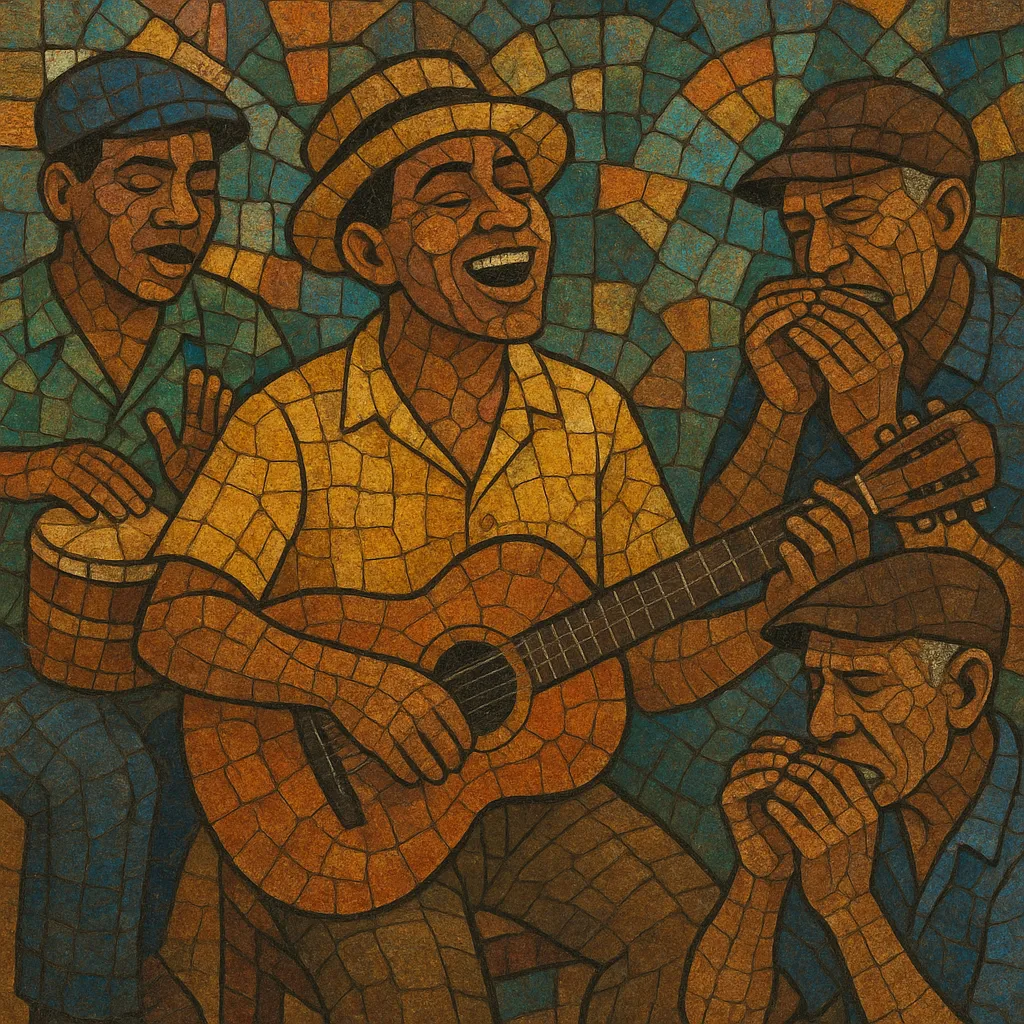Shanto is a Guyanese urban song style characterized by witty, topical, and often humorous lyrics delivered in Guyanese Creolese over light, danceable rhythms.
It emerged in the vaudeville and variety stages of Georgetown, blending calypso-style social commentary with the patter and theatricality of music-hall performance. Typical accompaniment is acoustic and small-ensemble: guitar or banjo (sometimes cuatro), maracas (shac-shac), light hand percussion (bongos, small drums), and occasional harmonica. Harmonies are simple (I–IV–V) and the groove sits in a lilting 2/4 or 4/4 with offbeat accents reminiscent of early calypso and mento.
While closely related to calypso, shanto is distinctly Guyanese in its speech rhythms, slang, and satire, functioning as a musical newspaper of everyday life, gossip, and politics.
Shanto arose in British Guiana (now Guyana) in the late 1920s and 1930s, when vaudeville and variety shows thrived in Georgetown. Performers adapted the commentary spirit of Trinidadian kaiso/calypso and Jamaican mento to local tastes, mixing it with the comic timing and patter of British music-hall. The language, themes, and punchlines were unmistakably Guyanese—delivered in Creolese and aimed at everyday social issues, workplace banter, and political satire.
Augustus “Bill Rogers” Hinds is widely credited as the key pioneer who formalized the style and popularized it beyond local stages. Through 1930s recordings and touring, he codified shanto’s blend of topical humor, calypso-like rhythms, and music-hall theatricality. His songs functioned as lively social chronicles, earning shanto a reputation as a clever, danceable form of reportage.
After World War II, calypso’s regional boom and later soca’s rise drew the wider Caribbean spotlight. Shanto continued as a distinctly Guyanese tradition, heard at fairs, clubs, and on radio, but with fewer dedicated recordings.
From the late 20th century onward, revivals—most visibly through Young Bill Rogers (Roger Hinds), Bill Rogers’ son—helped keep the idiom’s core features alive: Creolese wordplay, lightly syncopated grooves, and theatrical delivery. Today, shanto is recognized as a foundational Guyanese popular music, a cousin to calypso that preserves local cadence and humor while informing modern Guyanese performance practice.


